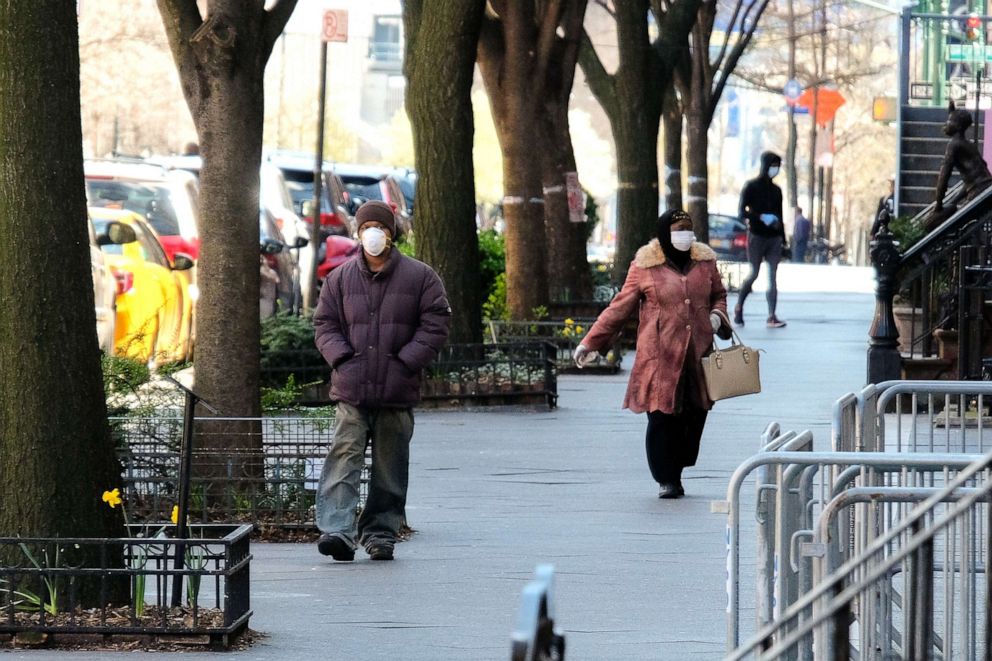To defeat COVID-19, don't only treat the patient, treat the neighborhood: OPINION
African American and Latino communities have been hit hard by the disease.
A virus that many once believed would impact only a small group of international travelers has infected nearly 750,000 Americans and killed another 39,000. Those numbers are shocking enough, but if you’re an African American or Latinx, you have even greater reason to be concerned.
In New York, officials say black and Latino residents are dying attwice the rate of white people. In Chicago, more than 70% of virus-related fatalities were among African Americans — a percentage more than double their share of the population. In Michigan, blacks make up 14% of the population but account for 33% of COVID-19 infections.
These racial disparities in infection and death rates prove what many health providers have long known to be true: racial inequities are rampant throughout our health care system. They also provide us with insight into how to slow the virus's spread. The impact is compounded by social and environmental factors which studies estimate account for 80% of health outcomes. Our priority should be to direct care to the communities most impacted by the disease. That means treating neighborhoods as if they were our patients.
Exactly why African American and Latino communities have been hit harder by COVID-19 is multifactorial. In many urban areas, African Americans and Latinos comprise a significant number of essential workers; 46% of NYC Metro Transportation Administration (MTA) workers are African American. These jobs are unlikely to be protected from loss and exposure. African Americans also have higher rates of comorbidities like hypertension or high blood pressure, diabetes, cardiovascular disease and obesity, making them more susceptible to infection. That would be consistent with data that show that high unemployment, poverty, food insecurity, lack of access to primary care – what we call the social determinants of health – correlate with elevated disease risk.
Indeed, looking at COVID-19 transmission patterns, we can quickly see that neighborhoods with higher rates of poverty are hot spots. Moreover, at the outset of the pandemic, testing was made available primarily to those who had recently traveled abroad or were believed to have come in contact with someone who had traveled abroad (or who played professional basketball) – in other words, wealthier Americans. Even now, with the entire country under lockdown, testing kits remain a limited resource in minority and low-income communities, which have long suffered from decreased access to basic health services such as primary care clinics.
The U.S. health care system has implicitly and explicitly driven health outcomes by policy, systems and environmental interventions designed at the neighborhood level. For example, in the city of Chicago, individuals that live downtown have an average life expectancy of 83 years. For residents that live just three train stops south, the average lifespan is 69 years. Furthermore, zip codes have offered insight into the organization of social, economic and environmental factors, suggesting that where you live can impact how long you live.
That makes sense, since zip codes often tell us the number and level of resources within a neighborhood as well as the quality of care available to its residents. In brief, people who live in poorer zip codes have fewer health resources and poorer health outcomes. Put another way, most state-of-the-art maternity wards and outpatient surgical units are built in wealthier neighborhoods. One of the issues that we need to consider in moving forward during recovery is identifying the core elements in an unhealthy environment that activate a sense of danger or, conversely, protect against harmful effects of chronic neighborhood stressors that we know impact progression of chronic disease and health outcomes.

Health inequities may be America’s ultimate chronic condition. We can’t undo centuries of racism, discrimination and poor implementation of health care systems in the brief time we have to fight the threat of COVID-19. But we can begin to loosen the shackles of our zip code-based health care system that has implications for the health of a neighborhood and those that live in it. To do so, we have to put our health care resources in proximity to those that need them most and continue to drive forward sustainable measures to confront systemic and structural challenges. In fact, studies suggest poverty alone cannot fully explain differences in health outcomes when socioeconomic status is controlled.
There is a growing body of evidence, including a recent study in BMC Public Health, that shows how people exposed to racism have poorer health outcomes (particularly for mental health), alongside both reduced access to health care and poorer patient experiences. The chronic stress load this creates on people of color have been shown to lead to poor health outcomes. If we controlled for racism as a health determinant, would we see African Americans disproportionately impacted in this crisis?
To blunt further transmission of the virus, health care providers must shift their focus to where they are most needed. Protocols should be created to facilitate equal access to lifesaving treatments and providers should be moved to the neighborhoods where their expertise is most urgently required – because what good is medical care if those we need to care for do not have access to it?
The COVID-19 pandemic requires flexibility, new ways of thinking and swift action. If we really want to save lives and prevent rampant and widespread infection, we’ll stop treating individual patients and start treating the neighborhoods where they live.
Jay Bhatt, a practicing internist and Aspen Health Innovators Fellow, is an ABC News contributor. Kelli Todd is a health policy professor at the University of Iowa. Kavita Patel is an internal medicine physician and senior fellow at the Brookings Institution.




